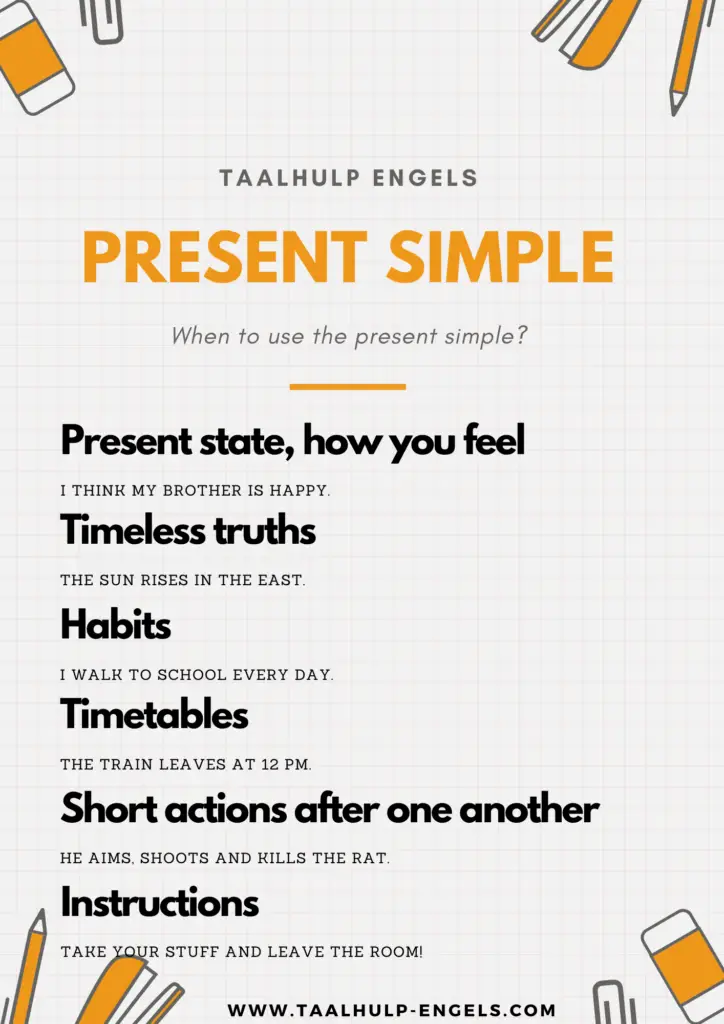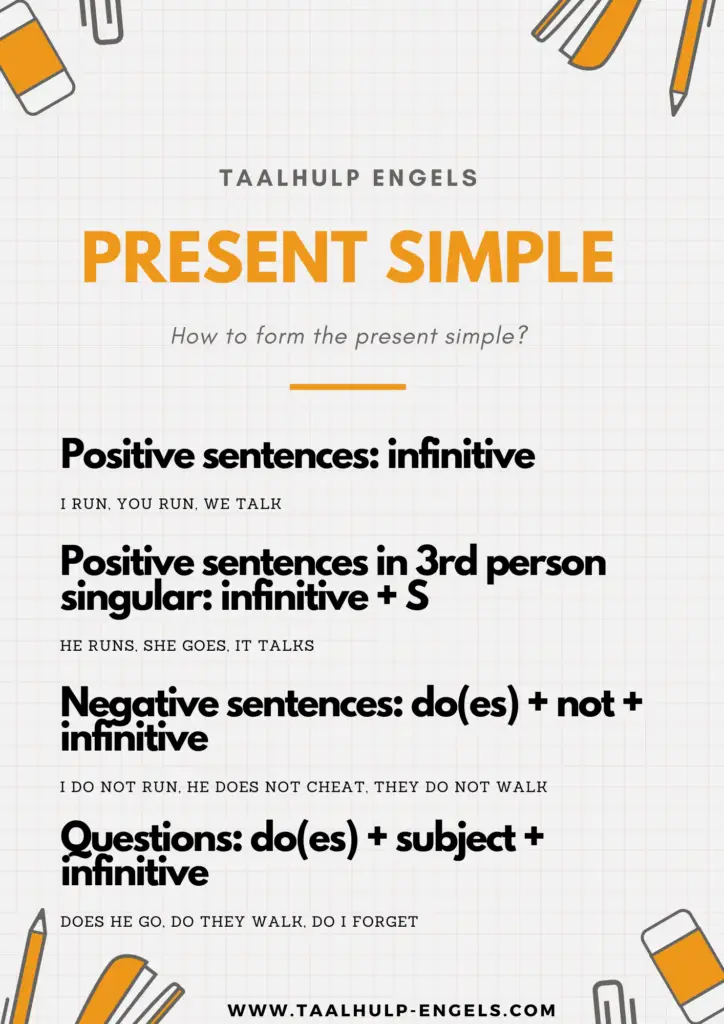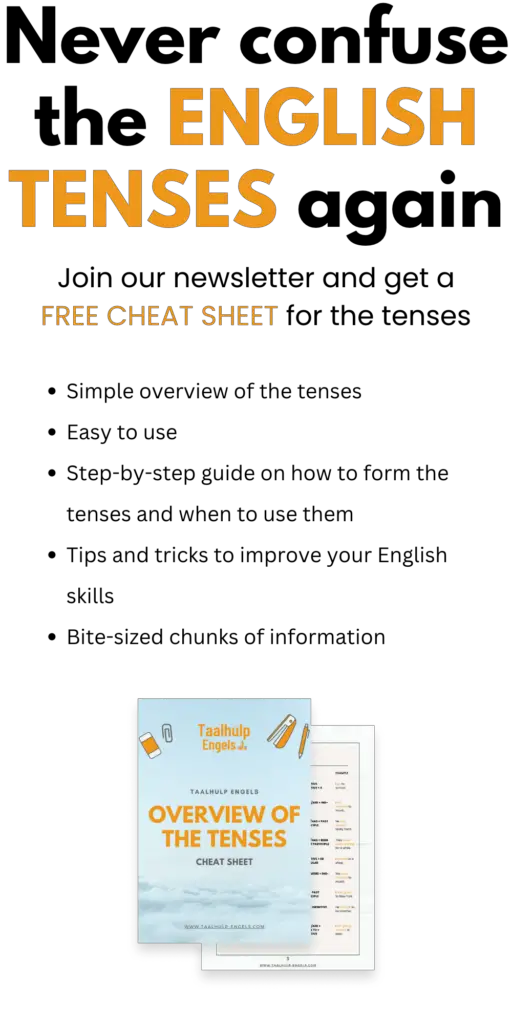The present simple (or simple present) is an important element of the English language and one of the most important tenses. On this page, you have a complete overview of when to use this tense and how you form it. There is also a video available in which you have a full overview of this tense.
Present simple (or simple present) tense
You use this tense when you want to talk about short simple actions and habits in the present. Below you can find an overview of different situations in which you use this tense.
To express a present state, how you feel at a particular moment in the present
- I think my brother is happy.
Timeless truths
- The sun rises in the east.
Habits in the present
- I walk to school every day.
Timetables (also in the future)
- My train leaves at 12 pm.
Short actions that happen after each other
- He aims, shoots and kills the rat.
Instructions
- Take your stuff and leave the room!


Present simple overview (video)
How to form the present simple
Present simple positive
The present simple (or simple present) is the easiest tense because you just take the infinitive without <to>. There is only one exception, which is when you have a third-person singular form (he, she, or it). When you have a third-person singular form, you add <s> to the infinitive.
| I run |
| You run |
| He/she/it runs |
| We run |
| You run |
| They run |
When you’re dealing with a verb that ends in a sibilant, you add <es> to the infinitive in the third-person singular form.
- He watches.
If <y> appears after a consonant at the end of an infinitive, <y> changes into <ies> in the third-person singular form.
- He carries.

Present simple negative
If you want to make the negative form of the present simple, you need to use the auxiliary verb ‘to do’ + not + the infinitive of the main verb.
| I do not run |
| You do not run |
| He/she/it does not run |
| We do not run |
| You do not run |
| They do not run |
If you want to use ‘to be’ in the negative form, you conjugate ‘to be’ and put ‘not’ right after the verb.
| I am not |
| You are not |
| He/she/it is not |
| We are not |
| You are not |
| They are not |
Present simple questions
If you want to form a question in the present simple, you need to use the auxiliary ‘to do’, followed by the subject of the sentence and the infinitive of the main verb.
| Do I work? |
| Do you work? |
| Does he/she/it work? |
| Do we work? |
| Do you work? |
| Do they work? |
If you want to form a question with ‘to be’ in the present simple, you put the conjugated verb before the subject.
| Am I? |
| Are you? |
| Is he/she/it? |
| Are we? |
| Are you? |
| Are they? |
Time indicators
If you have one of these words in a sentence, it’s usually an indication that you are dealing with a present simple.
- Always, every day, often, usually, never, sometimes
Examples
| Positive | Negative | Question |
| I work He sings I am | I don’t work He doesn’t sing I am not | Do I work? Does he sing? Am I? |


Exercises
- Exercise 1
- Exercise 2
- Negative Exercise 1
- Negative Exercise 2
- Questions Exercise 1
- Questions Exercise 2
- Mixed Exercise 1
- Mixed Exercise 2
- Mixed Exercise 3
- Mixed Exercise 4
- Mixed Exercise 5
Related articles
- Present Tenses Overview
- Present Continuous
- Present Perfect
- Present Perfect Continuous
- Future Tenses Overview


